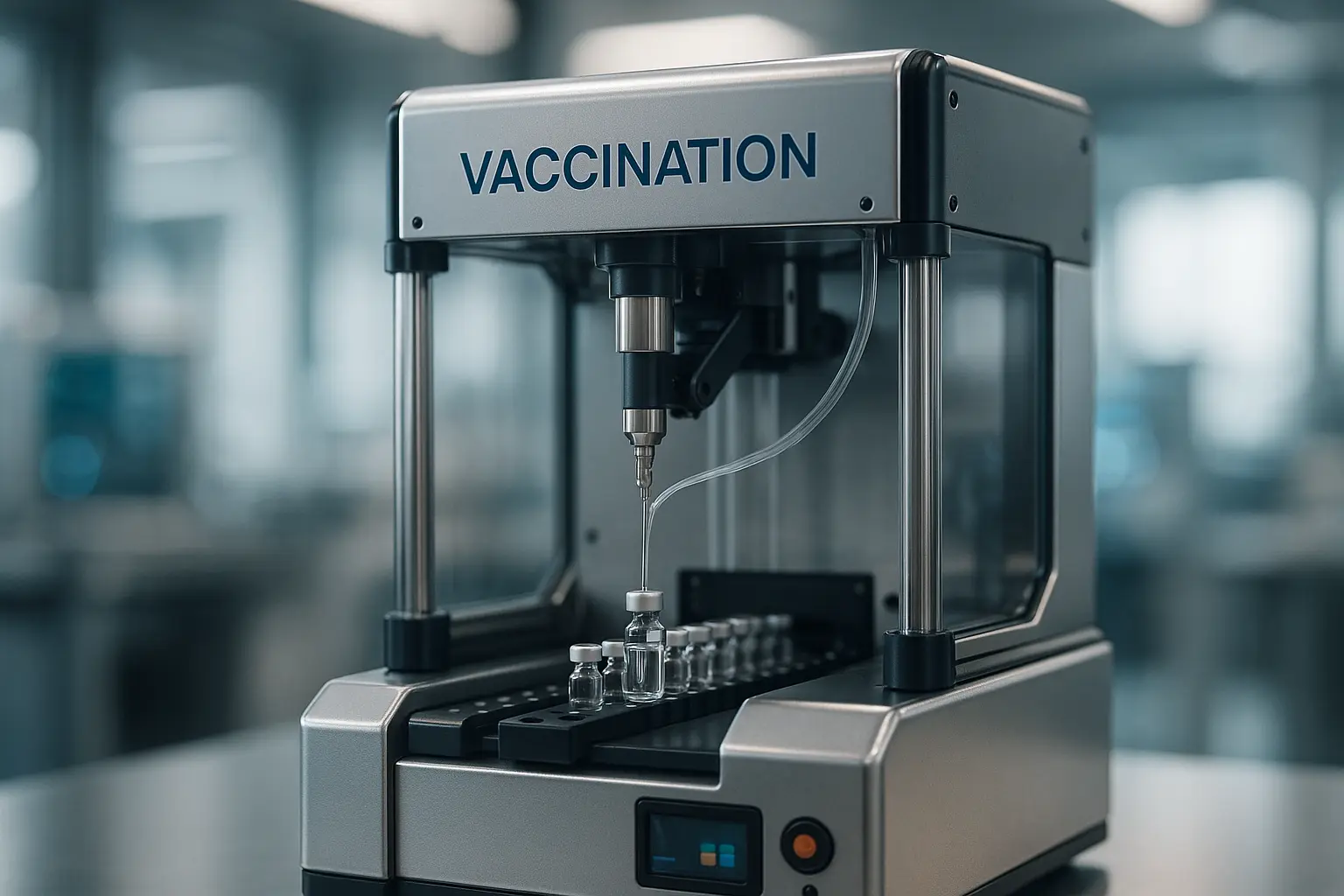Welcome to the future of vaccination technology, where we delve into the innovative realm of predictive maintenance for vaccination machines. With the rapid evolution of technology, we are on the brink of a major paradigm shift in how we manage and maintain these essential devices. Imagine a world where we can anticipate machine breakdowns before they disrupt our schedules, ensuring seamless operations and safeguarding public health. As we explore this topic, we will uncover the transformative potential of predictive maintenance, a strategy that not only enhances efficiency but revolutionizes the very foundation of healthcare delivery. Let us embark on this journey into the heart of innovation, where the fusion of technology and foresight sets the stage for a more resilient future.
Understanding Predictive Maintenance
In the domain of vaccination machines, predictive maintenance stands as a beacon of modern technological advancement. But what exactly does it entail? In simple terms, predictive maintenance leverages data-driven insights to anticipate and address potential machine failures before they manifest. By employing a suite of tools such as sensors and advanced analytics, we can monitor the health and performance of these machines in real-time.
The rationale behind predictive maintenance is compelling. Traditional maintenance practices often follow a reactive or scheduled approach, where interventions occur only post-failure or at predetermined intervals. However, these methods can lead to unexpected downtimes and increased operational costs. Predictive maintenance, on the other hand, offers a proactive solution, enabling us to intervene only when necessary.
By integrating machine learning algorithms and IoT (Internet of Things) technology, we can predict the likelihood of a breakdown with remarkable accuracy. This foresight not only extends the lifespan of equipment but also optimizes resource allocation, minimizing waste and unnecessary expenses.
In the context of vaccination machines, the benefits are manifold. We can ensure the uninterrupted delivery of life-saving vaccines, maintain vaccine potency by preventing refrigeration failures, and reduce the risk of vaccine spoilage. Ultimately, predictive maintenance empowers us to enhance the reliability and efficiency of our healthcare infrastructure, positioning us at the forefront of innovation in public health.
The Technology Behind Predictive Maintenance
While the concept of predictive maintenance is inherently straightforward, the technology driving it is both sophisticated and cutting-edge. It begins with the deployment of a network of sensors embedded into vaccination machines. These sensors continuously capture data on machine parameters such as temperature, pressure, vibration, and operational cycles.
Once collected, this data is transmitted to a centralized platform where machine learning algorithms spring into action. These algorithms analyze patterns and anomalies, comparing real-time data against historical trends to forecast potential issues. It’s akin to a digital crystal ball, offering us a glimpse into the future of machine performance.
Furthermore, the communication between sensors and analytics platforms is enabled by IoT technology. This interconnected web of devices ensures seamless data flow, providing us with timely insights. The integration of cloud computing further amplifies this process, offering scalable storage solutions and enhancing data accessibility.
But the true power of predictive maintenance lies in its ability to learn and adapt. As more data is gathered, the algorithms become increasingly accurate, refining their predictions with each cycle. This iterative process allows us to stay ahead of the curve, continuously improving machine reliability.
In the realm of vaccination machines, this technology is a game-changer. It allows us to not only predict failures but also optimize machine performance, ensuring that every vaccine administered is done so with precision and efficiency.
Benefits of Predictive Maintenance in Healthcare
The application of predictive maintenance within the healthcare sector is a progressive step towards enhancing operational efficiency and patient safety. Primarily, it reduces the risk of unexpected failures in vaccination machines, thereby minimizing disruptions to vaccination campaigns. This reliability is critical as it ensures the timely administration of vaccines, safeguarding public health and preventing potential outbreaks.
Additionally, predictive maintenance offers significant cost savings. By addressing issues before they escalate, we can avoid costly repairs and replacements. This efficiency translates to a reduction in operational expenses, allowing healthcare providers to allocate resources more effectively.
Moreover, the technology fosters a culture of continuous improvement. With real-time data and insights at our disposal, we can fine-tune machine performance, achieving heightened levels of precision and accuracy. This not only enhances the quality of service delivery but also boosts patient confidence in the healthcare system.
Beyond the direct benefits, predictive maintenance also contributes to environmental sustainability. By optimizing equipment lifecycle and reducing waste, we can minimize our carbon footprint and promote eco-friendly practices within the healthcare industry.
Collectively, these benefits underscore the transformative potential of predictive maintenance. By embracing this advanced strategy, we can elevate the standard of care, reduce costs, and champion a sustainable approach to healthcare delivery.
As we stand at the crossroads of innovation and healthcare, the advent of predictive maintenance heralds a new era of efficiency and reliability. By predicting and preemptively addressing machine breakdowns, we can ensure the seamless administration of vaccines, a cornerstone of public health.
The journey we’ve embarked upon highlights the profound impact of technology in reshaping our approach to healthcare maintenance. Through data-driven insights and advanced analytics, we are poised to revolutionize how we manage vaccination machinery, aligning our operations with the demands of the modern world.
Let us continue to embrace this foresight, leveraging predictive maintenance to foster a future where healthcare is not just responsive, but proactive. As we forge ahead, may the fusion of technology and healthcare pave the way for a healthier, more efficient tomorrow.
FAQ
What is predictive maintenance, and how does it apply to vaccination machines?
Predictive maintenance is a proactive approach that uses data analysis tools and techniques to predict potential equipment failures before they occur. In the context of vaccination machines, it involves monitoring various machine parameters to anticipate breakdowns and perform maintenance activities at the right time, thus ensuring uninterrupted vaccine production.
How does predictive maintenance improve the efficiency of vaccination machines?
Predictive maintenance enhances efficiency by reducing unexpected machine downtime and optimizing maintenance schedules. By predicting potential issues and addressing them before they escalate, it ensures continuous operation, minimizes production delays, and extends the lifespan of the machines.
What technologies are typically used in predictive maintenance for vaccination machinery?
Technologies used include sensors for real-time monitoring, data analytics software for processing machine data, and machine learning algorithms to predict possible failures. These technologies work together to offer insights into machine health and performance, enabling timely interventions.
What are the key indicators that suggest a vaccination machine might require maintenance?
Key indicators include abnormal vibrations, temperature fluctuations, unusual noise levels, and inconsistent production outputs. Monitoring these parameters can provide valuable insights into the machine’s condition and help identify when maintenance is needed.
How can implementing predictive maintenance impact vaccine production costs?
Implementing predictive maintenance can significantly reduce costs associated with unexpected machine failures, emergency repairs, and production downtime. It can also lower maintenance expenses by optimizing service schedules and reducing the frequency of unnecessary maintenance activities.

